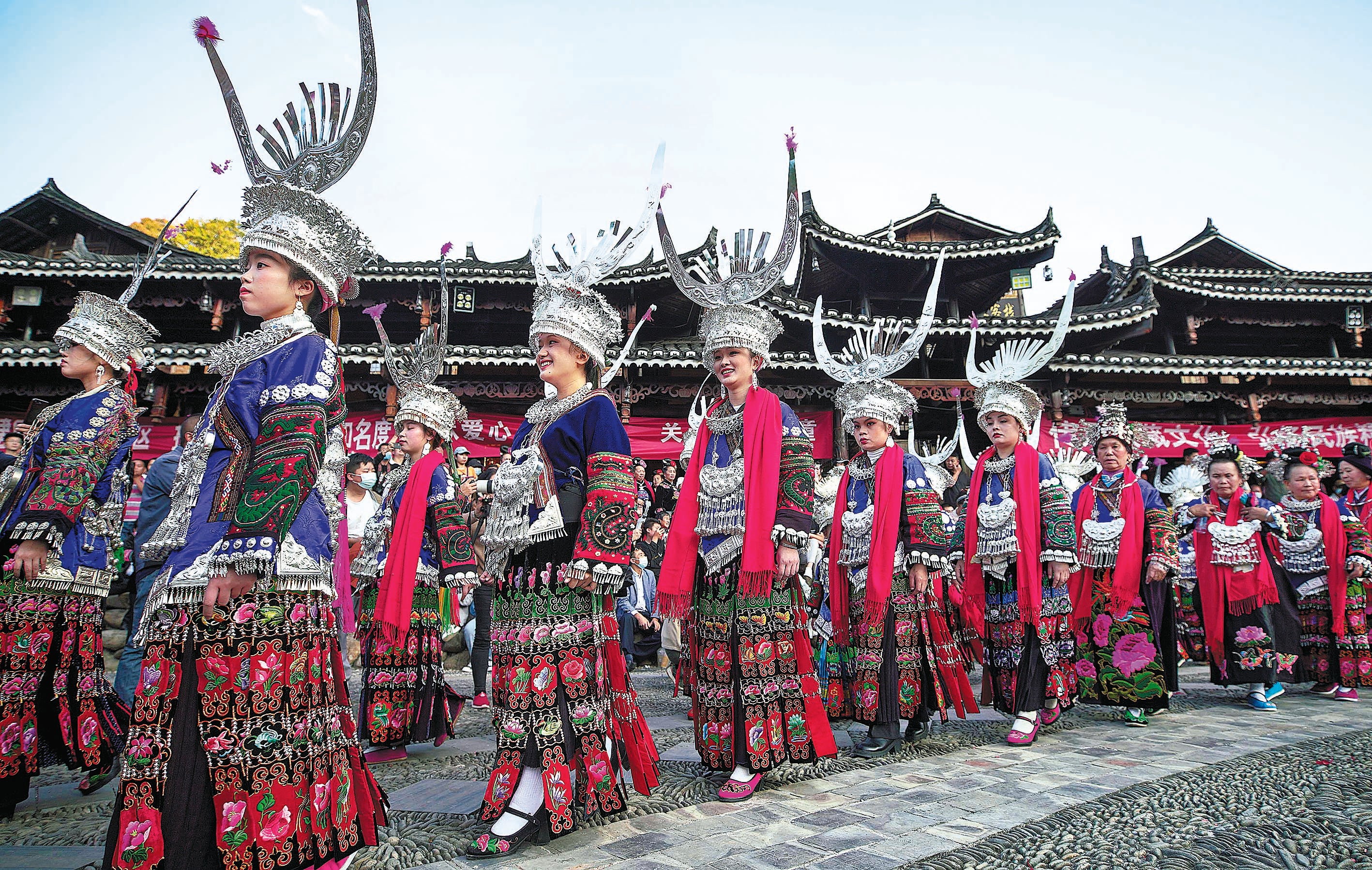Rural areas taste commercial success
THE ARTICLES ON THESE PAGES ARE PRODUCED BY CHINA DAILY, WHICH TAKES SOLE RESPONSIBILITY FOR THE CONTENTS

By Li Lei, Yang Jun and Li Yingqing
Tucked away in the rugged terrain of Guizhou province, Xijiang Qianhu Miao village, a highly popular destination with visitors, is making its mark in the competitive rural tourism industry.
Li Tianyi, 48, born and bred in Xijiang township and now a sociologist, has witnessed at first hand the village’s transformation since the early 1980s.
About 40 years ago the ethnic village inhabited by members of the Miao and Dong communities was grappling with intractable poverty. Now, the village ranks among the top scenic spots for urban residents longing for a respite from the hustle and bustle of city life and for the chance to post photos of their visits on social media.
Li, a member of the Miao ethnic group who teaches at Guizhou Minzu University in Guiyang, the provincial capital, said the secret of the village’s commercial success is its distinctive culture.
In 1982, as China gradually opened up its economy and gave priority to growth, Xijiang Qianhu Miao village, which roughly translates as “Miao village with 1,000 households”, was designated a scenic spot by the provincial government for its breathtaking views.
Seen from above, the village is home to a sea of bamboo houses spread among rolling terraced rice fields and fish ponds. As night falls, tens of thousands of light bulbs gleaming dim and yellow from residents’ homes transform the ancient hamlet into a kind of fairyland.
Visitors immerse themselves in local culture by taking part in festivities in which villagers dressed in traditional clothing parade on the streets.

“The terraced fields, festivals, folk songs and dances are all embedded in the rice-growing culture of the Miao people,” Li said. “The core to the village’s development is its culture.”
For years Li has monitored the development of tourism in the village. In 2016 he set up the Xijiang Qianhu Miao Village Cultural Research Institute, with the aim of reviving the fading culture of his people and ultimately sustaining the tourist boom from which locals and those living beyond the area have prospered.
Tourism and traditional culture, as Li has observed, go hand in hand. “Tourism gives traditional culture a second life in modern times and enables traditional culture to travel farther.”
To help Xijiang gain a competitive edge amid increased rural tourism, the institute researched and documented the intangible cultural heritage of the Miao people, such as their folk songs. This effort provided the basis for devising entertainment projects to provide visitors with an immersive experience, Li said.
For example, one of the village’s main attractions was inspired by the Miao tradition of throwing lanmenjiu, or rice-wine parties, to entertain wedding guests.
“While we need to find those traditions that resonate with modern-day visitors, we simply cannot just reinvent traditions out of thin air,” Li said.
“Tourism must be based on local culture and a region’s distinctive resources.”
Li Xiaoyun, a rural development expert at China Agricultural University in Beijing, said that if all villages were identical, the countryside would no longer trigger nostalgia among the public. In addition, farmers would be unable to tap the economic value of Chinese culture in different regions.
“More and more places are putting increased emphasis on protecting and inheriting regional cultural characteristics while vitalising themselves,” he said.
Li Xiaoyun is among scholars using their expertise to curb rural poverty through tourism, part of the anti-poverty drive that began 10 years ago.
In 2014 he travelled with a team of researchers from Beijing to Hebian, which translates as riverside village, in Yunnan province. This picturesque ethnic Yao community sits on the perimeter of a subtropical forest.
The team’s involvement with the village, initially intended to be a field study of the poverty-stricken community covering just a few months, lasted several years. By the time it ended in 2017 the team had helped transform Hebian into a tourist resort complete with bamboo hotels, 4G internet access and nightclubs.
Li Xiaoyun said he does not believe in relying on a single source of income, so he set up an e-commerce centre in Hebian to help sell local farm produce, including organic eggs and pomelos.
“Tourism is not the only solution for rural villages,” he said.
